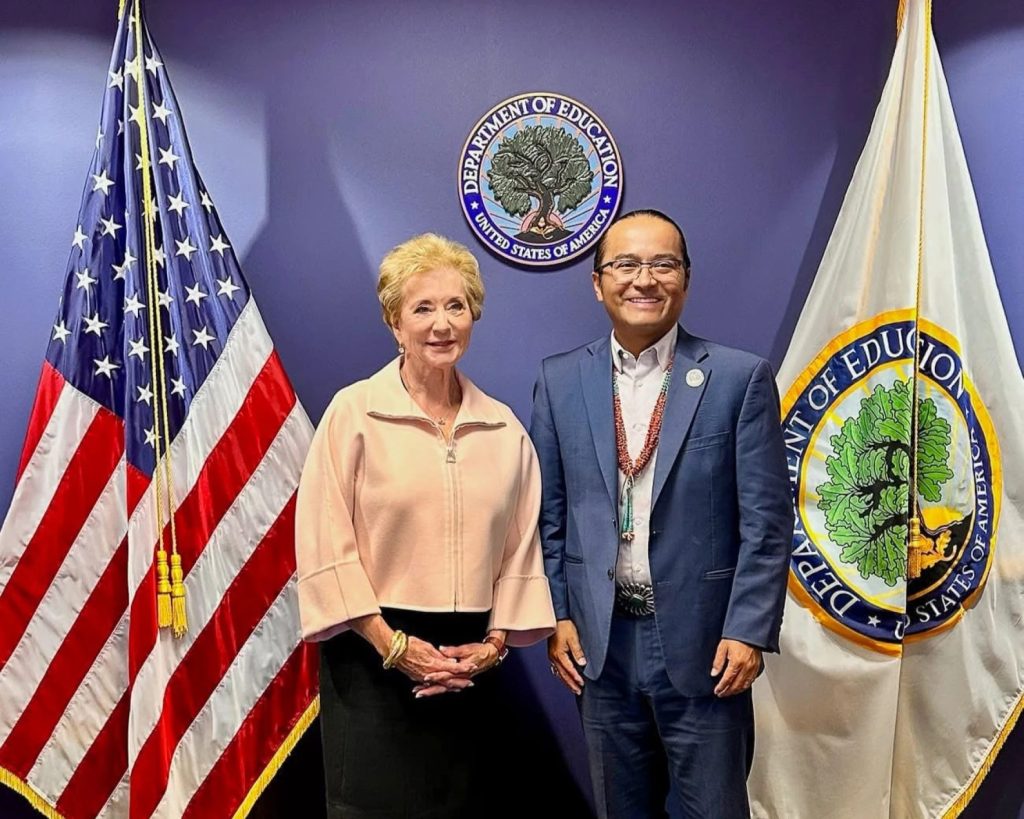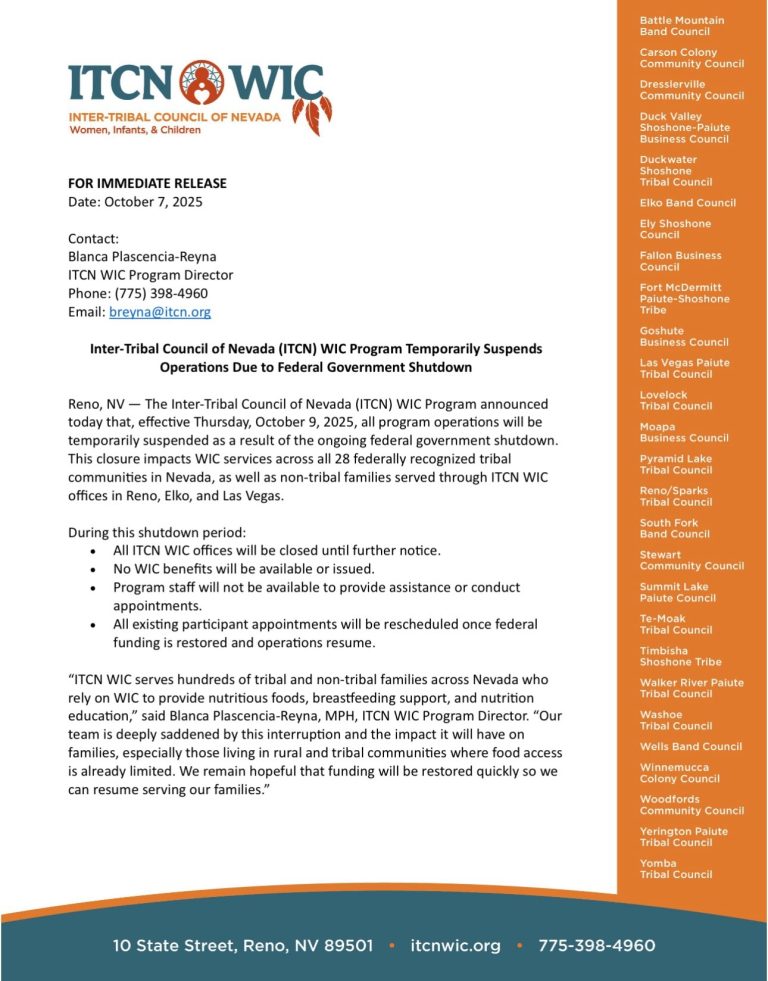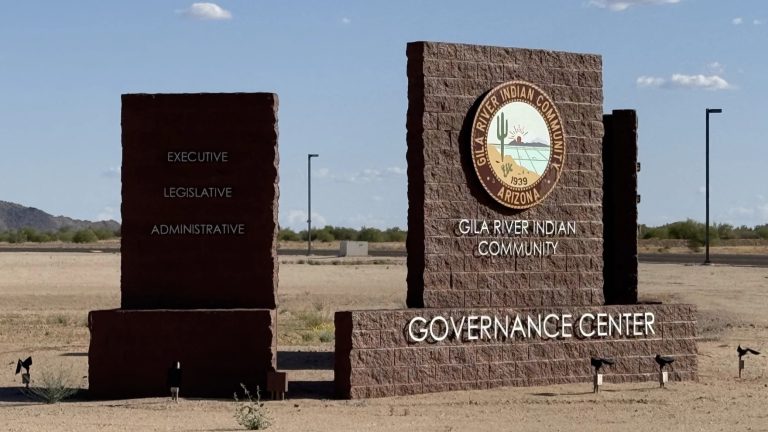Podcast: Play in new window | Download | Embed
The U.S. Department of Education announced last week a nearly half-billion dollar investment that will, in part, help to fund tribal colleges and universities (TCUs).
As KJZZ’s Gabriel Pietrorazio reports, it comes months after the White House proposed cuts that could’ve caused some schools to close.
Navajo Nation President Buu Nygren met with Education Secretary Linda McMahon, for the first time, in Washington, D.C. to explain why tribal education is not Diversity, Equity, and Inclusion (DEI) and how these institutions are tied to preserving language and culture.
“And I had to remind her about the Navajo Code Talkers and the things that we’ve done for this country and at the same time, making sure that we fund our education properly, including our higher education as well, so she was very receptive.”
But coming away from that recent conversation President Nygren calls a “big win,” he admittedly did not expect what would follow just days later.
“And then to get the good news after was even better – to know that over $100 million was going to be given to tribal colleges.”
Like New Mexico’s Navajo Technical University and the nation’s oldest, Diné College in Tsaile, Ariz., both chartered by the Navajo Nation.
Three dozen or so TCUs initially faced a roughly 90% funding deficit.
Now they’ll get a one-time 109% increase and Nygren suggests it’s a sign that the Trump administration is listening.
“The meeting that I had with her the week before was honored by really upholding her treaty trust responsibility.”
 The first feature film ever made in Idaho was shot more than a century ago – and it included more than a hundred members of the Nez Perce Tribe.
The first feature film ever made in Idaho was shot more than a century ago – and it included more than a hundred members of the Nez Perce Tribe.
Although only a third of the film was recovered, it’s been digitized and edited into a short film.
Northwest Public Broadcasting’s Lauren Paterson has more.
“Told in the Hills” is considered the first feature film shot in Idaho. It was filmed in Kamiah on the Nez Perce (PURSE) Indian Reservation.
“ It was made in 1919 and it was an unusual film, even for early cinematic standards because of the unique and unprecedented collaboration with the Nez Perce tribe.”
That’s Colin Mannex, executive director of the Kenworthy Performing Arts Centre.
The silent film’s story follows Jack Stuart, played by Robert Warwick, a man from a wealthy family who tries to escape some family drama by heading West. But he gets himself into trouble.
More than a hundred members of the Nez Perce Tribe were invited to participate in the filming.
“ They presented a lot of authentic cultural regalia, as a part of the production.”
The Nez Perce tribal members portray the Kootenai tribe in the film, because the story takes place in rural Montana, despite being filmed in Idaho.
After a young Kootenai chieftain is accidentally killed when he tries to bring a message of goodwill to the U.S. cavalry, Stuart is unjustly imprisoned. And the story follows how he escapes.
Like many silent films, there will be music throughout the entire picture. The score for the new version of this long-lost western romance was created by Diné composer Connor Chee.
“ What I ended up doing was writing, I think it’s about 17 different pieces, 17 cues that had a variety of emotions that could match what I’d seen on the screen in this rough cut.”
The music score will be performed live at the movie showing.
Being a member of the Navajo Nation, Chee says he doesn’t have to explicitly try to give his work an Indigenous feel, because it’s always woven into his work, but he says he did approach the music with a historical lens.
“ I mean, I wanted like the melodrama and to, to match sort of the time period in that sense of what you’re seeing on screen.”
The new version of the restored film will premiere at the Kenworthy Theatre in downtown Moscow, Idaho on the last Friday and Saturday of September as part of the theater’s Silent Film Festival.
Get National Native News delivered to your inbox daily. Sign up for our daily newsletter today.




Leave a Reply